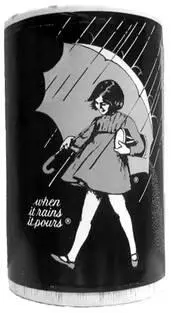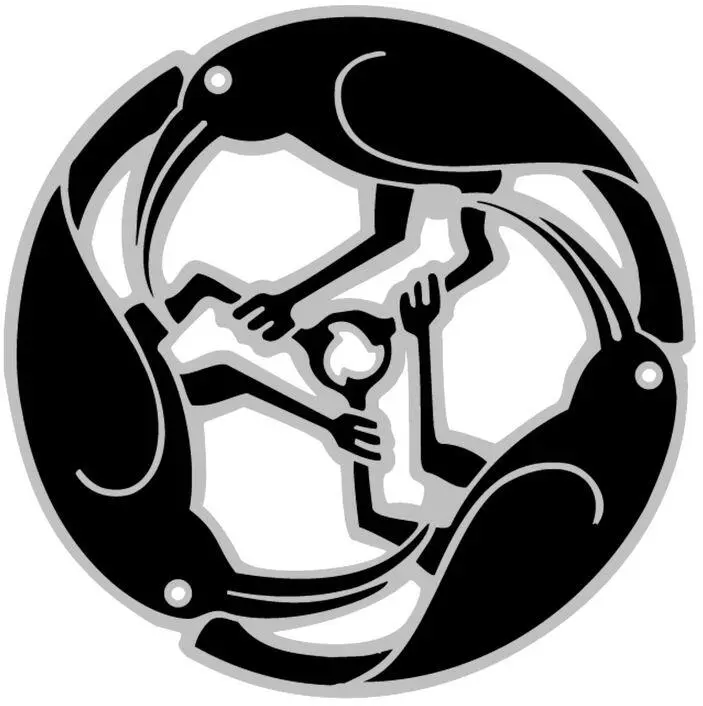Douglas Hofstadter - I Am a Strange Loop
Здесь есть возможность читать онлайн «Douglas Hofstadter - I Am a Strange Loop» весь текст электронной книги совершенно бесплатно (целиком полную версию без сокращений). В некоторых случаях можно слушать аудио, скачать через торрент в формате fb2 и присутствует краткое содержание. Жанр: Прочая документальная литература, на английском языке. Описание произведения, (предисловие) а так же отзывы посетителей доступны на портале библиотеки ЛибКат.
- Название:I Am a Strange Loop
- Автор:
- Жанр:
- Год:неизвестен
- ISBN:нет данных
- Рейтинг книги:4 / 5. Голосов: 1
-
Избранное:Добавить в избранное
- Отзывы:
-
Ваша оценка:
- 80
- 1
- 2
- 3
- 4
- 5
I Am a Strange Loop: краткое содержание, описание и аннотация
Предлагаем к чтению аннотацию, описание, краткое содержание или предисловие (зависит от того, что написал сам автор книги «I Am a Strange Loop»). Если вы не нашли необходимую информацию о книге — напишите в комментариях, мы постараемся отыскать её.
I Am a Strange Loop — читать онлайн бесплатно полную книгу (весь текст) целиком
Ниже представлен текст книги, разбитый по страницам. Система сохранения места последней прочитанной страницы, позволяет с удобством читать онлайн бесплатно книгу «I Am a Strange Loop», без необходимости каждый раз заново искать на чём Вы остановились. Поставьте закладку, и сможете в любой момент перейти на страницу, на которой закончили чтение.
Интервал:
Закладка:
Sluggo and the Morton Salt Girl
Well, I don’t want to stress the technical points here. The main thing to remember is that Gödel devised a very clever number-description trick — a recipe for making a very huge number g out of a less huge number k — in order to get a formula of PM to make a claim about its own Gödel number’s non-primness (which means that the formula is actually making a claim of its own nontheoremhood). And you might also try to remember that the “little” number k is the Gödel number of a “formula fragment” containing a variable x, analogous to a subjectless sentence fragment in quote marks, while the larger number g is the Gödel number of a complete sentence in PM notation, analogous to a complete sentence in English.
Popular culture is by no means immune to the delights of self-reference, and it happens that the two ideas we have been contrasting here — having a formula contain its own Gödel number directly (which would necessitate an infinite regress) and having a formula contain a description of its Gödel number (which beautifully bypasses the infinite regress) — are charmingly illustrated by two images with which readers may be familiar.

In this first image, Ernie Bushmiller’s character Sluggo (from his classic strip Nancy ) is dreaming of himself dreaming of himself dreaming of himself, without end. It is clearly a case of self-reference, but it involves an infinite regress, analogous to a PM formula that contained its own Gödel number directly. Such a formula, unfortunately, would have to be infinitely long!
Our second image, in contrast, is the famous label of a Morton Salt box, which shows a girl holding a box of Morton Salt. You may think you smell infinite regress once again, but if so, you are fooling yourself! The girl’s arm is covering up the critical spot where the regress would occur. If you were to ask the girl to (please) hand you her salt box so that you could actually see the infinite regress on its label, you would wind up disappointed, for the label on that box would show her holding a yet smaller box with her arm once again blocking the regress.
And yet we still have a self-referential picture, because customers in the grocery store understand that the little box shown on the label is the same as the big box they are holding. How do they arrive at this conclusion? By using analogy. To be specific, not only do they have the large box in their own hands, but they can see the little box the girl is holding, and the two boxes have a lot in common (their cylindrical shape, their dark-blue color, their white caps at both ends); and in case that’s not enough, they can also see salt spilling out of the little one. These pieces of evidence suffice to convince everyone that the little box and the large box are identical, and there you have it: self-reference without infinite regress!

In closing this chapter, I wish to point out explicitly that the most concise English translations of Gödel’s formula and its cousins employ the word “I” (“I am not provable in PM ”; “I am not a PM theorem”). This is not a coincidence. Indeed, this informal, almost sloppy-seeming use of the singular first-person pronoun affords us our first glimpse of the profound connection between Gödel’s austere mathematical strange loop and the very human notion of a conscious self.


CHAPTER 11
How Analogy Makes Meaning

The Double Aboutness of Formulas in PM
IMAGINE the bewilderment of newly knighted Lord Russell when a young Austrian Turk named “Kurt” declared in print that Principia Mathematica, that formidable intellectual fortress so painstakingly erected as a bastion against the horrid scourge of self-referentiality, was in fact riddled through and through with formulas allegedly stating all sorts of absurd and incomprehensible things about themselves. How could such an outrage ever have been allowed to take place? How could vacuously twittering self-referential propositions have managed to sneak through the thick ramparts of the beautiful and timeless Theory of Ramified Types? This upstart Austrian sorcerer had surely cast some sort of evil spell, but by what means had he wrought his wretched deed?
The answer is that in his classic article — “On Formally Undecidable Propositions of Principia Mathematica and Related Systems (I)” — Gödel had re-analyzed the notion of meaning and had concluded that what a formula of PM meant was not so simple — not so unambiguous — as Russell had thought. To be fair, Russell himself had always insisted that PM ’s strange-looking long formulas had no intrinsic meaning. Indeed, since the theorems of PM were churned out by formal rules that paid no attention to meaning, Russell often said the whole work was just an array of meaningless marks (and as you saw at the end of Chapter 9, the pages of Principia Mathematica often look more like some exotic artwork than like a work of math).
And yet Russell was also careful to point out that all these curious patterns of horseshoes, hooks, stars, and squiggles could be interpreted, if one wished, as being statements about numbers and their properties, because under duress, one could read the meaningless vertical egg ‘0’ as standing for the number zero, the equally meaningless cross ‘+’ as standing for addition, and so on, in which case all the theorems of PM came out as statements about numbers — but not just random blatherings about them. Just imagine how crushed Russell would have been if the squiggle pattern “ss0 + ss0 = sssss0” turned out to be a theorem of PM ! To him, this would have been a disaster of the highest order. Thus he had to concede that there was meaning to be found in his murky-looking tomes (otherwise, why would he have spent long years of his life writing them, and why would he care which strings were theorems?) — but that meaning depended on using a mapping that linked shapes on paper to abstract magnitudes ( e.g., zero, one, two…), operations ( e.g., addition), relationships ( e.g., equality), concepts of logic ( e.g., “not”, “and”, “there exists”, “all”), and so forth.
Russell’s dependence on a systematic mapping to read meanings into his fortress of symbols is quite telling, because what the young Turk Gödel had discovered was simply a different systematic mapping (a much more complicated one, admittedly) by which one could read different meanings into the selfsame fortress. Ironically, then, Gödel’s discovery was very much in the Russellian spirit.
By virtue of Gödel’s subtle new code, which systematically mapped strings of symbols onto numbers and vice versa (recall also that it mapped typographical shunting laws onto numerical calculations, and vice versa), many formulas could be read on a second level. The first level of meaning, obtained via the old standard mapping, was always about numbers, just as Russell claimed, but the second level of meaning, using Gödel’s newly revealed mapping (piggybacked on top of Russell’s first mapping), was about formulas, and since both levels of meaning depended on mappings, Gödel’s new level of meaning was no less real and no less valid than Russell’s original one — just somewhat harder to see.
Читать дальшеИнтервал:
Закладка:
Похожие книги на «I Am a Strange Loop»
Представляем Вашему вниманию похожие книги на «I Am a Strange Loop» списком для выбора. Мы отобрали схожую по названию и смыслу литературу в надежде предоставить читателям больше вариантов отыскать новые, интересные, ещё непрочитанные произведения.
Обсуждение, отзывы о книге «I Am a Strange Loop» и просто собственные мнения читателей. Оставьте ваши комментарии, напишите, что Вы думаете о произведении, его смысле или главных героях. Укажите что конкретно понравилось, а что нет, и почему Вы так считаете.












